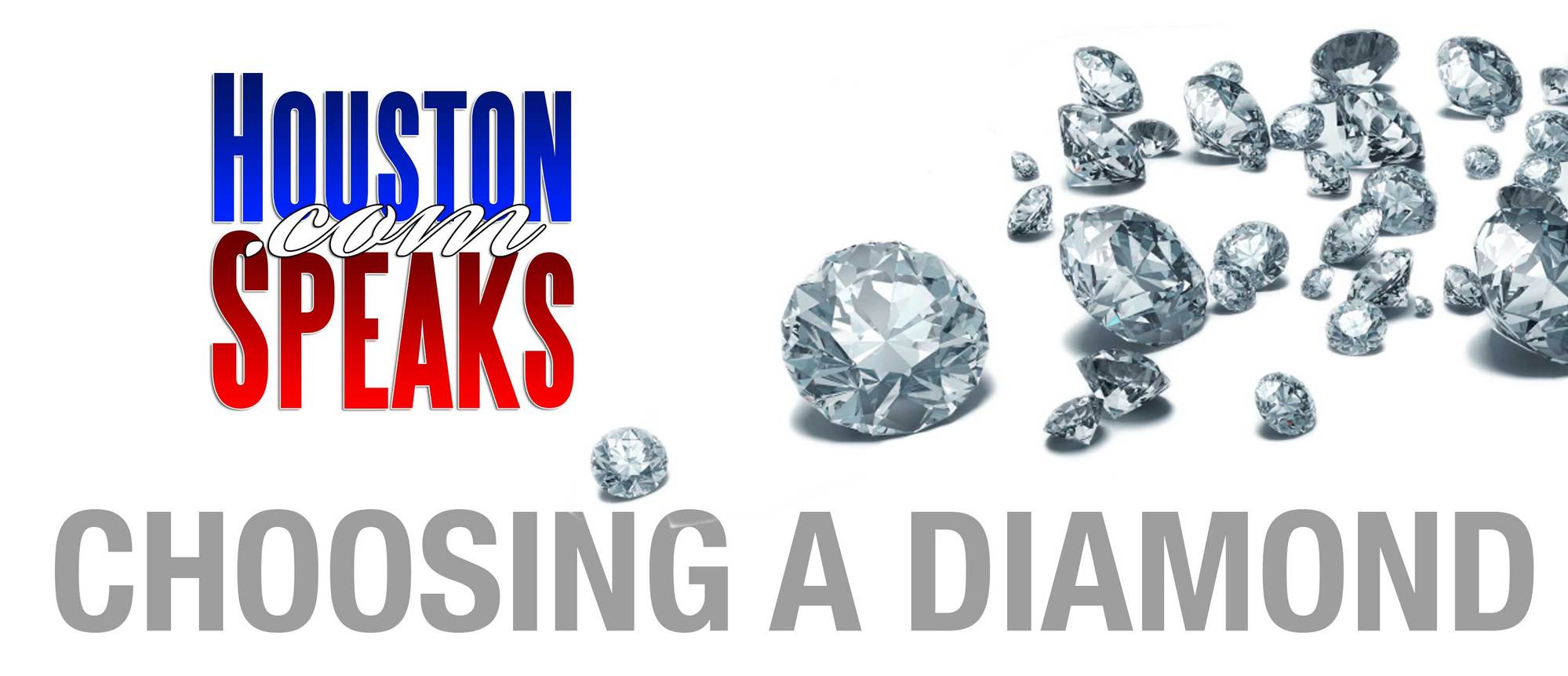How To Choose The Right Diamond
Looking for great information about how to choose the right diamond in Houston? HoustonSpeaks.com knows the diamond experts to tell you all about it..
We have all heard of the "4-C's" of choosing a diamond, but few people take the time to truly learn about what it all means and tend to walk blindly through the diamond buying process. Below you will find each aspect broken down into an easy-to-understand guide to help you find the best diamond for your needs.
Cut
Not only does the cut refer to the shape of the diamond, but the quality of the workmanship involved in the cutting of the stone.
Marquise, Princess, Round, Oval, Emerald, Radiant, Pear, and, most recently, Heart are the most common shapes of diamonds.
Make
Often left out as an aspect of importance, the make of a diamond is also a critical aspect with regard to quality. From one diamond to the next, the make can vary greatly and is the greatest determining factor in the beauty of the diamond. The make is not listed on most certificates, such as the GIA grading report, so you should take the time to learn them and choose the one that best fits your needs.
If you desire perfection at any cost, the ideal cut is what you'll want to look for, whereas very good or excellent will find you a diamond of high quality and beauty. Good is the make you'll want to seek out to get the largest stone for your dollar. While they aren't recommended for engagement rings, the poor quality make does exist, though even with a high color and clarity grade, brilliance and fire will be notably missing.
Color
The color of diamonds varies from colorless (most rare and precious) to many shades of yellow (less rare). Slight tints of yellow make a diamond less rare, but some people prefer the personality it gives a stone of good make and clarity.
With more and more celebrities opting for colored stones, we have all become increasingly aware of the various colors of diamonds available. While sapphires were the traditional bridal stone of royalty in centuries past, diamonds have long since taken a dominant role. The color of a traditional diamond will vary from colorless, which is the rarest, to fluctuating shades of yellow, in which case the rarity decreases. While tinges of yellow make for a more common stone, many people will choose these diamonds for their high make and perfect clarity.
Once again, we move from costliest to most budget-friendly beginning with the D color, which is colorless. To find a stone of incredible quality and beauty, the E or F color will be your ideal stone, as any hint of color is not visible to the naked eye. To find a larger stone while still maintaining a look of quality, G, H or I are your best choice, especially if set in gold.
As mentioned, many people choose a slight yellow tint. If this is your ideal stone, you'll want to look for a J, K, L or M color grade, and it will be most noticeable when set next to a colorless stone or in a very bright metal, such as platinum.
Clarity
There is no such thing as a "perfect" diamond, as they all flaws of some sort, whether internal or external. The level of clarity best suited for you will be based on how visible the flaw is and what you are willing to pay for a level of rarity most untrained eyes cannot see with or without a jewelers' loupe.
Once again, if cost is not an issue and perfection is the only thing you seek, choose a flawless or internally flawless stone. These are extremely rare and the price will reflect that. For a stone that looks flawless, but without the cost associated with it, you'll want to look for a VVS1 or VVS2, which will look flawless to the untrained eye while under a loupe. A VS1 or VS2 will appear flawless to the naked eye and even with a loupe, very few imperfections are visible (even to a diamond grader). SI1 and SI2 clarities are flawless to the naked eye and some SI3's are as well. This is the most common clarity in terms of purchasing, as most consumers really only desire this level of clarity. Stones that have flaws visible to the naked eye are graded I1, and some people chose this in order to have a larger stone that still sparkles, while an I2 or I3 lacks a great deal of brilliance and is more prone to cracking and chipping because of structural flaws within the stone itself.
Carat
The final "C" to consider in the carat weight. While some people only focus on this aspect, you have just learned about the importance of the other 3 C's and how they will affect the integrity of your stone. This is usually the most important aspect in determining the price of the stone, though the size will not affect the splendor of the stone that you choose. In order to obtain the most valuable and precious stone for your money, you'll want to first determine the quality that you would like based on the first 3 C's as well as the make, and then find the largest stone that will fit your budget.
With regards to engagement rings, most people spend between 1 and 3 months' salary and the most popular sizes are between 1/2 and 2 carats. Of course, you will want to determine what your intended truly wants, as some women prefer smaller stones of perfect quality while some lean toward a larger carat weight with some flaws or a higher level of color.

